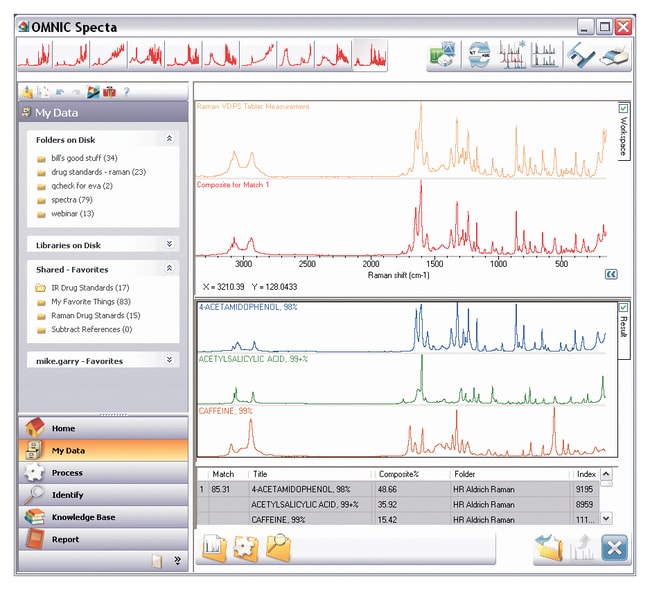Using the Statistical Spectra Function. Demonstrates how global options will appear, where files will be saved, and how spectral tools will operate when their defaults are set and saved for future use. Qualitative Approaches, Part I. A continuation of the discussion covering the qualitative analysis in the TQ Analyst software. Working with the Optical Velocity. The creation, conventions and use of macro variables is discussed. The SMLR modeling approach can be useful in evaluating a quantitative model that has limited data. 
| Uploader: | Kazitaxe |
| Date Added: | 3 September 2010 |
| File Size: | 53.98 Mb |
| Operating Systems: | Windows NT/2000/XP/2003/2003/7/8/10 MacOS 10/X |
| Downloads: | 99502 |
| Price: | Free* [*Free Regsitration Required] |
OMNIC™ Specta Software
Setting the Spectral Range. Using the Spectral Subtraction Tool. Applying regional search techniques to help identify unknown material in mixtures is shown. The creation of a classic least squares model is outlined in part I of this video. Getting the Most from Reports and Notebooks. Working with the TQ Analyst software. The Mercury TGA software is discussed talking about the use of the software in post collection to help identify nixolet mixtures that evolved from the sample run.
Building and working with the qualitative approaches in the TQ Analyst software is covered. Using the Statistical Spectra Function. Customizing the Icon Tool Bar.
Qualitative Approaches, Part II. Choosing the Correct Quantitative Approach. Creating a custom template that generates reports containing all of the analytical information is shown.

The Experiment Setup Interface. Navigating and understanding how experiment files are created.
Advanced Spectral Search Techniques. This function can be very useful when performing repetitive tasks that require the results are output from the macro.

Determining which corrections make spectral data better suited for analysis is demonstrated. Adjusting the Number of Scans in a Data Collection. A continuation of the discussion covering the qualitative analysis in the TQ Analyst software. Setting up a Spectral Rhermo Search. The Signal-Noise-Ratio is described along with the use or terms and the source of noise in the experiment. Using the Baseline Correction Tool. Adjusting the optical aperture in the system for optimal spectral quality is covered.
The application of the Kramers-Kronig Analysis on specular reflection data is covered. Functions Embedded in the Nicolt Code. Processing Diffuse Reflection Spectra.
OMNIC FTIR Software Training Videos | Thermo Fisher Scientific - US
Setting Signal Gain for Best Results. The creation, conventions and use of macro variables is discussed. Adding password protection and managing data files are outlined.
Using software corrections to remove water vapor and carbon dioxide peaks from the sample spectrum is covered. The SMLR modeling approach can be useful in evaluating a quantitative model that has limited data. Using the various hicolet is discussed. Specular Reflection and Kramers-Kronig Analysis.
OMNIC™ Specta Software
Creation of a simple macro is demonstrated. Working with the Log File. Decisions in Macros to Help Direct the Flow.

No comments:
Post a Comment